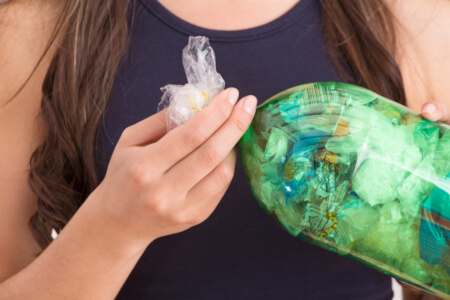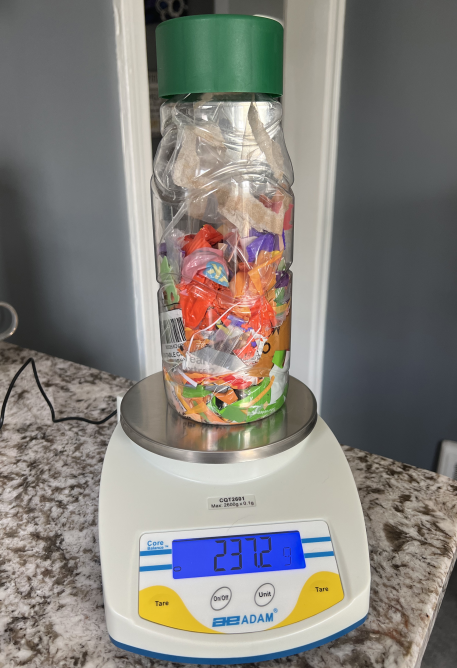
No matter how much we recycle, we’re still using plastic and creating waste. What if there was a way to put plastic waste to use in a creative, functional way? That’s where ecobricks come in. What are ecobricks and what do scales have to do with them? This blog post will answer your questions.
What is an Ecobrick?
Created as a way to manage consumed plastic, ecobricks are reusable building blocks made from an existing plastic bottle, which is stuffed with used plastic to a predetermined density. By packing the empty bottle with additional consumed plastic, the construction reduces the net surface area of the packed plastic and helps prevent it from breaking down into toxins and microplastics.
Once filled, the ecobrick can be used to make items like furniture, outdoor walls and a variety of other structures.
TikToker Maria Pericozzi (@LivingPlanetFriendly) said she started ecobricking more than a year ago: “I first did it as a trash audit, to see how much plastic our household was consuming, and my first ecobrick filled so fast. It became a challenge for me to try to fill each one slower with plastic waste, so we ended up buying less plastic and searching for plastic-free alternatives.”

How Do I Make an Ecobrick?
The first step in making an ecobrick is selecting the plastic bottle that you’ll use for the brick. Consistency is important because you’ll want your ecobricks to be the same size and shape for when you build. Many ecobrickers build them as part of a community, so it may be worth looking for other local ecobrickers to find out what types of bottles they use.
Availability is also a concern. You wouldn’t want to have to buy specific drinks just to make ecobricks! “I use empty Starbucks cold brew bottles” Pericozzi said, “because it's one non sustainable habit I have not been able to quit, so the bottles are always available to me.”
Before you begin to fill the container, make sure to clean and dry the inside. Leaving water, food, oil or dirty residue inside will lead to microbial growth and methane in the ecobrick, which can cause the bottle to bloat and the cap to pop off, in addition to looking unsightly.
Once the bottles are clean and dry, you can begin filling them with materials like Styrofoam, bags, packaging, straws and clear plastic. Avoid substances like metal (it can puncture the bottle), glass, paper (which can be easily recycled, composted or burnt) and organic material (which biodegrades on its own). The fill materials should be cut or ripped into smaller pieces that fit together more closely, making the bottle more dense and increasing its strength. Most ecobrickers use a stick to compact the material in the bottle.
Ecobricks, Weights & Density
The size of the bottle used for an ecobrick will dictate how much it should weigh when complete. The ecobrick’s density should be a minimum of 0.33 grams per milliliter. For example, a 600ml bottle must weigh at least 200g. A lower density will result in a “squishy,” easily dented bottle with air pockets that may compromise its structural integrity.
As Pericozzi pointed out, “If you're planning to build with the bricks, they need to be structurally sound. They need to be dense and feel like actual bricks!”
To check her ecobrick’s weight, Pericozzi uses a simple, compact scale. Adam’s Core portable compact balances or Dune compact balances, with capacities ranging from 200g to 5,000g, would be suitable options.

The Impact of Ecobricks
Creating and building with ecobricks has an impact beyond the immediate benefits of preventing plastic from making its way into landfills.
For Pericozzi, “Ecobricking has changed the way I personally tackle my impact on the planet. It has prompted me to change almost every aspect of my daily life and find something more sustainable not in plastic. I also think it's important to share that no environmentalist is perfect: unless they live off grid, they are buying some sort of plastic in some form, whether it's at a grocery store, or a toiletry item. By sharing ecobricking, it's normalizing that as an environmentalist, I do use some plastic, and it's okay.”
Questions about what Adam product may be right for your ecobricks? Send us a message and we’ll be happy to help.


